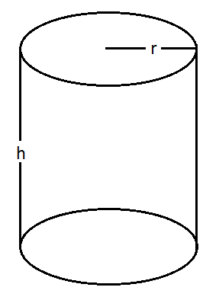
The surface area of a cylinder corresponds to the combined measure of its curved lateral surface and the two circular bases. It represents the total area that the cylinder covers.
To calculate the surface area of a cylinder, you can utilize the following formula:
Surface Area = 2πrh + 2πr²
In this formula, ‘r’ denotes the radius of the circular base, and ‘h’ signifies the height or length of the cylinder.
By employing the provided formula, you can determine the precise surface area of the cylinder. The first term, 2πrh, accounts for the area of the curved lateral surface, while the second term, 2πr², represents the combined areas of the two circular bases.
Understanding the surface area of a cylinder holds significance in various fields, including mathematics, engineering, and architecture. It plays a crucial role in calculating material requirements, designing structures, and solving geometric problems.